Posted 28 января 2023, 11:25
Published 28 января 2023, 11:25
Modified 30 января 2023, 11:56
Updated 30 января 2023, 11:56
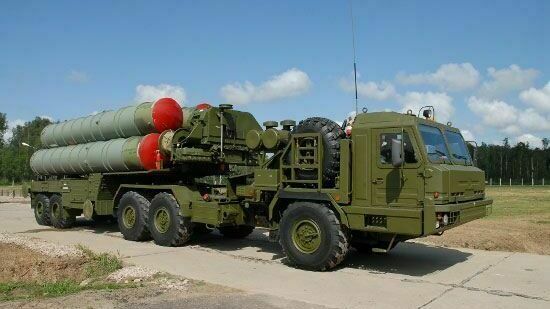
There are no such analogue in the world anymore: how the air defense of Moscow was created. From 1918 to the present day
Alexander Sychev
This song is probably remembered today only by veterans of the Moscow air defense district:
"We have a combat order in any regiment, in our metropolitan district we are always on the alert.
The locator takes the target, and all the troops know – we will surely shoot down the insidious enemy!"
Confidence appeared in the 60s. At the same time, probably by order of the Moscow Air Defense Command, the famous Soviet composer Alexander Dolukhanyan and the poet Mikhail Andronov, Sergey Mikhalkov's brother, wrote this song-march. For them, it was another side job. It's a common thing among cultural figures. But this time there was also a strong inspiring reason – the first great success of the Soviet air defense system, which at that time everyone in the Soviet Union knew about, as later about Yuri Gagarin, and were proud of.
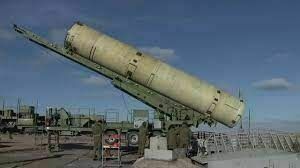

In 1960, near Sverdlovsk, now Yekaterinburg, an American U-2 spy plane piloted by Francis Gary Powers was shot down by a missile launched from the S-75 anti-aircraft complex. Prior to May Day, these American planes were dominating our skies with impunity, crossing the country's territory at an altitude of 21 kilometers inaccessible to fighters. The Americans believed in their impunity and became completely insolent.
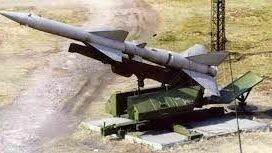

And so: "The rocket thunder has subsided, silence has come, and it is visible on the locator that the target has been hit. We are a formidable particle of the Soviet troops, missiles are watching the air border. We keep our sky over the capital, we keep the sky of the whole country safe!"
Originally from 1918
Moscow's air defense system, and now missile defense (ABM), is the oldest in our country and around the world.
It originated in April 1918. After the signing of the Brest-Litovsk Peace Treaty, it became clear that Germany would not stop and would definitely take advantage of the Civil War going on in Russia. The Germans will strike the main blow in the direction of Moscow, which has regained its metropolitan status.
At that time, the enemy could use up to 300 aircraft based in the occupied territories of Ukraine, Belarus and the Baltic States only in one Moscow direction. A huge force at that time and quite close. To protect against German air raids, a special unit was organized as part of the Moscow Defense District, headed by a former captain of the Tsarist army, Nikolai Mikhailovich von Enden.
He was born into a hereditary military family. His father Mikhail Alexandrovich rose to the rank of Major General. Thus, the life path of Nicholas was predetermined from childhood – to serve the Motherland with a tool in his hands. He received his primary education in the Pskov Cadet Corps. Then there was the Konstantinovsky Artillery School, the Mikhailovsky Artillery Academy, the Officer Artillery School, and between periods of study – service in the army.
In 1915, on the western front, he commanded a Separate anti-aircraft artillery division. May 16, 1915 was a "black day" for German aviation. During the day, as a result of anti-aircraft shelling, the Germans lost four aircraft. It is from the moment of the creation of this division that the day of military air defense is celebrated in Russia. And in 1916, Enden commanded a Consolidated division of separate light batteries for firing at the air fleet.
The biography of the first Russian anti-aircraft gunner is poorly studied. Does anyone know today what happened in the life of the captain and forced him, who served for some time on the side of the revolution and gained authority, to switch to the White Movement shortly after being appointed head of the Moscow Air Defense. After this decision, he fought in the armed forces of the South of Russia and the Russian Army. In Sevastopol, he headed the fortress artillery and was seriously wounded. He rose to the rank of colonel, and since 1920 he lived in France, remaining a patriot of Russia and an active participant in foreign White Guard organizations. Whatever it was, by the summer of 1918, another person took his place in the Moscow air defense.
To cover Moscow from an air attack , all the forces and means available at that time in the Moscow Military District were involved: The 4th combat Aviation group, consisting of four fighter detachments, the 3rd Corps squadron and the 7th separate autozenite battery. By the summer of 1918, the total number of fighter aircraft was 26 aircraft.
All anti-aircraft artillery was consolidated into two groups: "northern" and "southern". The firing positions were located at a distance of two to four kilometers from the Moscow District Railway. So the so-called "fire ring" was formed around the capital.
For the timely detection of enemy aircraft in the most dangerous directions, "signal" points were organized, equipped with direct telephone communication with the nearest airfield and the air defense department. Posts appeared in Volokolamsk, Mozhaisk, Maloyaroslavets, Serpukhov and other cities located at a distance of 100 — 120 kilometers from Moscow.
The air defense units were tasked with protecting the city from enemy airships and aircraft raids. But, if the enemy still manages to break through the defense line, the anti-aircraft artillery was supposed to prevent the planes from dropping below two thousand meters. Then aviation could effectively conduct bombing and fire machine guns only when flying at very low altitudes. If the anti-aircraft artillery forced the pilots to go higher, then the raid became meaningless.
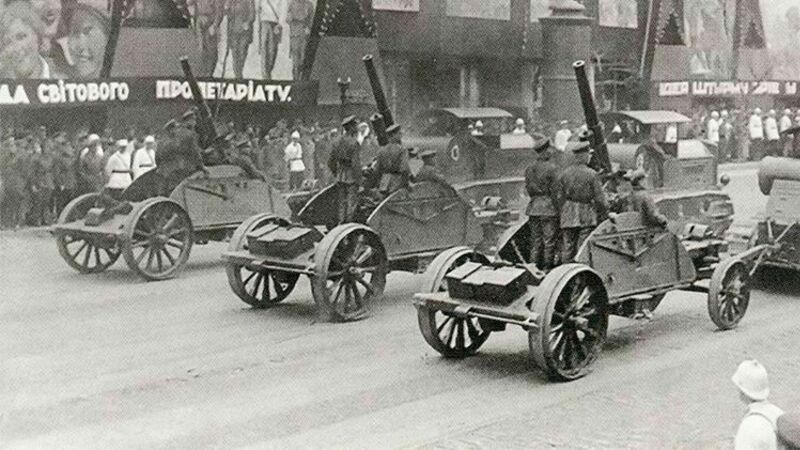

In 1919, Tula was included in the air defense zone. It was necessary to protect the Red Army's armory forge. The aviation composition was increased to 50 fighter aircraft and ten more anti-aircraft batteries were formed. Trained teams of five or six people were sent to all organized observation posts. All the seniors at the posts were given documents that obliged local authorities and telegraph employees to transmit messages starting with the word "air", first of all, even interrupting the transmission of any other important telegrams.
On the eve of the Great Patriotic War, all air defense systems were combined into the Moscow air Defense Zone, which also included Kalininsky, Yaroslavsky, Gorky and Tula districts. The principle of circular echeloned defense remained at the heart of the organization of air defense, but the western and southern directions were especially strengthened.
The first massive raid on the capital was carried out by Luftwaffe planes of Nazi Germany on the night of July 22. The bombing raid on Moscow lasted five hours. The planes were traveling in four echelons and faced unexpectedly dense defense. The German bomber aircraft allocated for the raids on Moscow suffered heavy losses. By the end of August 1941, when the raids on Moscow ended, the 55th Bomber Squadron had lost half of its personnel, and the 53rd Condor Legion Squadron had lost 70% of its aircraft.
"The country's air defense has coped well with the defense of the capital of our Motherland, Moscow," Marshal of the Soviet Union Georgy Zhukov wrote in his memoirs. – Moscow was tightly and reliably covered by anti-aircraft artillery and fighter aircraft. The air enemy in rare cases managed to break through the air defense to Moscow. Most often, enemy aircraft were destroyed or returned home..."
Bombs still fell on Moscow land, there was destruction, people died, but without the active work of the capital's air defense, there would have been incomparably more victims. Anti-aircraft gunners and fighters saved tens, maybe hundreds of thousands of Muscovites, the economy and architecture of the city.
Since the summer of 1943, the units of the capital's air defense remaining in the city conducted artillery salutes to commemorate the victories on the fronts of the Great Patriotic War. The first salute took place on August 5, and there were more than 350 of them in total. The rest of the units reached Berlin, covering the advancing troops from air strikes.
New threats – jet aviation
By the end of the 1940s, military aviation began to switch to jet propulsion.
The speed and altitude of the flight increased. Anti-aircraft artillery became less and less effective means of confrontation. Even radar guidance stations and more advanced anti-aircraft shells did not save. The United States had intercontinental strategic bombers that were able to fly to the territory of the Soviet Union and even Moscow and return to base.
Inspired by the emerging technical capabilities, the US Joint Chiefs of Staff began planning possible nuclear strikes against the USSR. By 1949, the Americans had developed a Dropshot plan, which provided for 100 nuclear strikes on Moscow and 70 other major cities of the USSR. And in general, until 1953, ten such plans were invented.
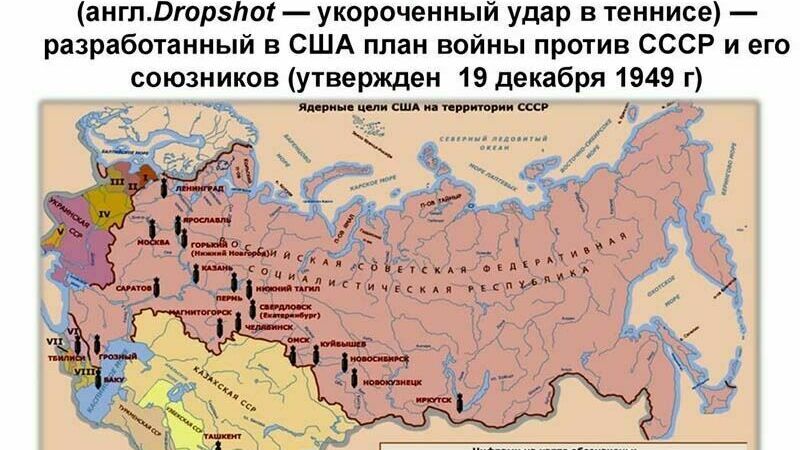

The carriers of atomic bombs were then the B-29, which dropped atomic bombs on Hiroshima and Nagasaki in 1945. They were based in Alaska, Western Europe, Turkey, Pakistan, Iran and Japan. Later, the ultra-long-range B-52s appeared, which flew twice as fast, much higher and five thousand kilometers further than the B-29, carrying a bomb load of 22.5 tons.
In connection with the threat of an atomic attack, Joseph Stalin set the task of equipping Moscow's air defenses with new weapons capable of preventing massive strategic air raids from any direction as soon as possible. The new Moscow air defense system was supposed to provide simultaneous shelling of 20 targets, at altitudes up to 25 kilometers and at a distance of 200 kilometers. The probability of defeat, according to the country's leadership, should have been close to 100 percent.
The formation and development of the USSR air defense in those years is inextricably linked with the name of Academician Alexander Andreevich Raspletin. His biography is the story of a boy from Rybinsk, the son of a shot merchant. The chekists were looking for Konstantin, his father's brother, but just in case they shot Andrei as an "enemy of the people and an alien element".


Raspletin himself miraculously escaped repression. I finished my ninth year in Rybinsk. Even at school, he became interested in amateur radio. After graduation, he worked as a stoker at a local power plant, and a little later went to Leningrad, where he entered a technical school. Even then, he began to invent various radio devices, assembled three of his own radio stations. Then there was the institute, and during the defense of Leningrad, the radar of its design helped to detect German aircraft. It was then that the story of the creator of the world's best air defense and missile defense system began.
"The creation of an almost insurmountable anti-aircraft missile defense system in Moscow required fundamentally new, original solutions. In the confrontation between aviation and anti-aircraft artillery controlled by narrow-beam radars, the victory remained for aviation. The element striking the aircraft was not to be an artillery shell, but an anti-aircraft guided missile, and the radar was to detect all incoming targets and aim anti-aircraft missiles at them. It was a revolution in both radar and rocket science," recalled Raspletin's associate Karl Samuilovich Alperovich.
He was born in 1922 in the city of Artemovsk (Bakhmut) Donetsk region. According to the education he received in Moscow, he had nothing to do with radar, but he quickly realized the importance of the work and quickly mastered the subtleties of the topic. He owns 130 scientific papers and more than 20 copyright certificates for inventions.
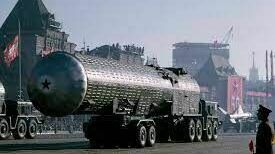

In the early 50s, Raspletin, who at that time held the position of deputy general designer under Sergo Beria, who had just graduated from the Institute, and Pavel Kuksenko, proposed the concept of a multifunctional multi-channel radar. The device had to simultaneously detect aerial targets, accompany them and aim missiles.
The Americans didn't think of that. They went the way of creating separate devices, listening to the advice of specialists exported from Germany. They built two locators in their first Nike-Hercules anti-aircraft missile system. One accompanied the target, and the second aimed a missile at it.
There were the same specialists in the USSR, but Sergo Beria, who worshiped German technical thought, managed to deceive and drag the idea of Raspletin through the Germans. Under his leadership, the first S-25 Berkut anti-aircraft missile system was created, which stood up for the defense of Moscow.
Concrete roads were built around the city at a distance of 50 and 90 kilometers, which at first were exclusively military, and then became accessible to all motorists. They were simply called "concrete".
On the inner side of the roads, air defense facilities were built, which formed two rings of defense. They formed a continuous circular zone of destruction with a depth of more than 100 kilometers, and a height of about 20 kilometers. The circles were divided into sectors with a length of 10 – 15 kilometers. For conspiracy, the concreted structures were called exclusively "vegetable storehouses", and the starting fields were called "pastures".
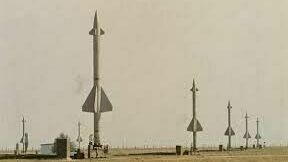

In front of each guidance radar at a distance of one to four kilometers, there were 60 launch tables with three missiles each. The complexes were supposed to simultaneously fire at up to 20 air targets in each area. The guided missiles launched vertically, gradually leaning away from the radars towards the targets. The radar automatically accompanied them and aimed at the targets.
From the moment the decision was made to create a new type of air defense to the release of the first copies, a record two years have passed, according to current times. Already on September 20, 1952, prototypes of the B-200 radar systems and B-300 missiles were sent for firing tests. And in 1953, tests were already carried out on a target, the role of which was performed by a TU-4 bomber flying at an altitude of seven kilometers. The plane was shot down. The first serial sample of the Berkut complex was released in 1954. In the same year, the system passed the final test – it was able to intercept 20 flying objects at the same time.
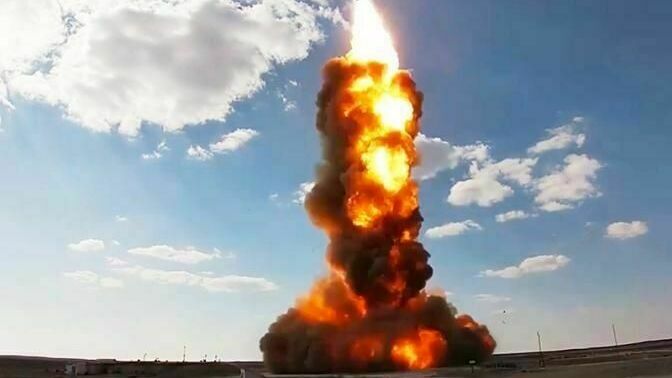

During the design work on the S-25 system from 1950 to 1955, the Lavochkin Design Bureau developed anti-aircraft guided missiles V-300 of several series, as well as air-to-air missiles G-300.
They say that the name "Golden Eagle" was formed from parts of the surnames of Lavrenty Beria and the chief designer who started the development, Pavel Kuksenko. Perhaps it was. After the arrest of Beria Sr., the system began to be called simply C-25.
By 1956, 56 air defense regiments were deployed around Moscow with almost 3.4 thousand launchers of S-25 anti-aircraft missiles, which in modified form served for thirty years. The entire system could simultaneously destroy up to a thousand aircraft. The reliability of the defeat was ensured by the ability to launch three missiles at one target.
A large family of "C"
The solution found turned out to be so successful that the S-75 complex was created on the basis of the S-25, which defended the country's borders, was used in China and Vietnam, where it successfully shot down American spy balloons and combat aircraft.
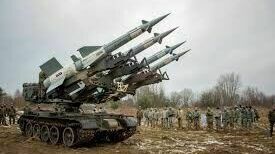

Then the S-125 Neva short-range complex appeared to combat low-altitude targets. Development began in 1955. Then there was a need to shoot down low–flying targets - at an altitude of one hundred meters. The Americans realized that high altitudes no longer save, and on small, fast-flying planes are inaccessible to either radar or missiles.


The first S-125 air defense systems entered service in 1961. The export version with the name "Pechora" was in great demand on the world arms market.
The next S-200 complex, created under the leadership of Raspletin, was also included in the Moscow air defense system. For the first time, a homing missile and control from an electronic computer (computer) were used on this complex.
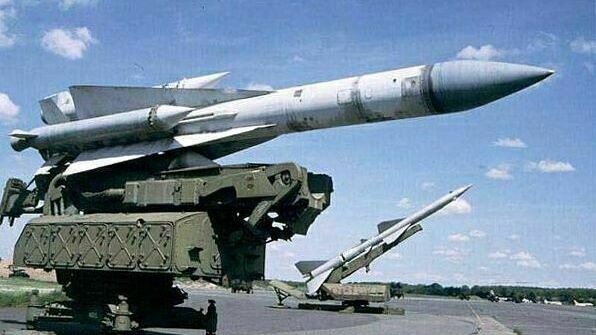

The development of the S-200 Angara anti-aircraft missile system began in 1958. The complex was supposed to destroy targets that could fly at speeds from 360 to 3500 kilometers per hour. And shoot them down at a distance of up to 160 kilometers and at an altitude of up to 35 kilometers.
The S-200 air defense system was adopted in 1967 and for 15 years practically nothing was known about it. Only in 1984, the system was partially declassified and began to be sold to foreign users. One of the first buyers of the S-200VE was Libyan leader Muammar Gaddafi.
The range of the complex allowed Gaddafi to declare a significant part of the Gulf of Sirte as the territorial waters of Libya and to stop the unauthorized passage of aircraft of other states through the 32nd parallel. In March 1986, three attack aircraft that took off from the American aircraft carrier Saratoga crossed the forbidden line and were shot down.
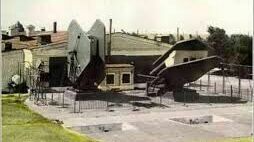

By the way, the appearance of S-200 complexes in the Soviet Union completed the history of flights of SR-71 "Blackbird" supersonic spy planes along the coast of the Barents and Baltic Seas in 1990.
In the 80s, the S-300 "Favorit" complexes appeared. The chief designer was Veniamin Pavlovich Efremov, a Tambov guy born in 1926. He picked up the ideas of Raspletin, who began working on the S-300 in 1966, but did not have time to finish the project. It was the first mobile multi-channel complex capable of dealing with modern and even just conceived at that time shock systems.


The S-300 "Favorit" anti-aircraft missile system basically replaced the S-25 air defense system. The remaining 17 of the 56 positions of the S-25 were occupied by anti-aircraft missile regiments equipped with new mobile complexes.
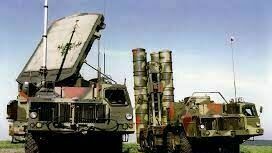

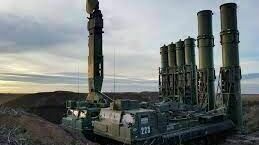

In 2007, the transition of the Moscow air defense system to the more advanced S-400 Triumph began. Each air defense system is capable of simultaneously escorting up to 300 targets, detecting them at a range of up to 600 kilometers and firing 36 with up to 72 anti-aircraft missiles aimed at them. Two missiles are reserved for each target for reliability, but as a rule one is enough.
The 40N6E ultra-long-range missiles can hit targets at a distance of two to 400 kilometers. Tactical ballistic missiles flying at speeds up to 4.8 kilometers per second, the complex shoots down at a distance of up to 60 kilometers.
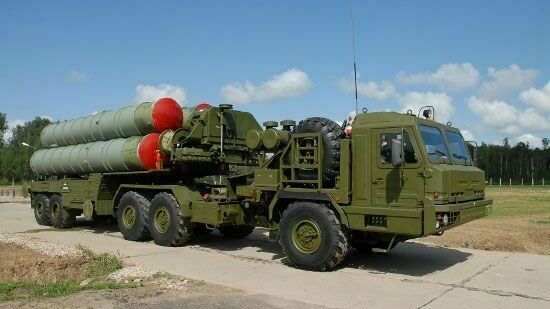

The S-400 is capable of even aircraft with reduced radar visibility, low-flying targets, even at an altitude of five meters, and skirting the terrain. The advertised American Patriot complex is not capable of this. Below 60 meters, the American complex does not take targets.
In addition, various means of electronic intelligence serving the S-400 complexes allow you to see even balloons, which, as you know, ordinary radars do not notice. Moreover, some elements of the intelligence system cannot be detected and destroyed by anti-radar missiles. Many of them operate in passive mode and do not emit electromagnetic waves by which they can be detected.
According to Western analysts, the S-400, along with such systems as the Iskander operational and tactical missile systems and the Bastion-class coastal anti-ship complexes, plays a key role in the concept of the Russian armed forces, which has received the name "Access Exclusion Zone" in the West. Its meaning lies in the fact that enemy troops cannot be located and move within the radius of the restricted zone systems without the risk of causing unacceptable damage to them.
Since 2021, even more modern S-500 Prometheus anti-aircraft missile systems have begun to enter service with the 15th Special Purpose Army of the Russian Aerospace Forces, which covers Moscow and the Central Industrial District. "There are no such complexes abroad," says military expert Yuri Knutov. "At the moment, the S-500 is the best anti-aircraft missile system in the world".


The S-500 Prometheus mobile air defense system can destroy rockets and spacecraft in near-Earth orbits, eliminate targets flying at hypersonic speeds of Mach 5 and higher. It is compatible with missile attack warning stations and will be able to work both in a single air defense system, interacting with S-400 and S-300, Pantsir-S1M and other complexes, and autonomously. These several complexes create a single system that works "under the guidance" of the S-500, and form a layered air and missile defense system. The Yenisei radar used on the S-500 is noticeably superior in power to the S-400 radar and detects targets in near space at a range of up to two thousand kilometers.
From air defense to missile defense
In the middle of the last century, the creation of a missile defense system (ABM) also began.
In August 1953, seven marshals sent a report to the USSR government about the nuclear missile threat from the United States. Marshals were concerned about intelligence data, which reported on the development by the Americans, who took out of Germany the rocket man Werner von Braun, a missile with a flight range of at least 8.8 thousand kilometers and a warhead weight of at least 3.2 tons.
The government listened to the marshals' concerns. Work has begun on the creation of special interceptor missiles, as well as detection, tracking and targeting systems. All these works in the USSR were combined into "Project A".
The construction of all elements of the "A" system, including the powerful radar station "Danube-2", capable of detecting intercontinental ballistic missiles at a range of up to 1.2 thousand kilometers, began in 1958 at the Sary-Shagan test site in Kazakhstan and lasted until the autumn of 1960.
Test launches of the V-1000 anti-missiles were carried out on the R-5 and R-12 ballistic missiles launched from the Kapustin Yar range. The Danube-2 radar detected an attacking missile at a range of 1.5 thousand kilometers, and the anti-missile destroyed it at an altitude of about 25 kilometers.
But the "System A" remained experimental, although the obtained data and developments formed the basis of another project – the A-35 "Aldan" anti-missile system. It was adopted in 1973. It consisted of the main command and computing center, equipped with a computer, radar "Danube-3U" and "Danube-3M", 8 missile launch systems.
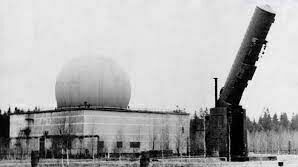

Moscow's anti-missile shield based on the A-35 missile reliably stood on combat duty until 1990.
The successes of our designers in the creation of missile defense systems caused concerns on the part of the United States. They significantly reduced the chances of success of the use of mine- and sea-based intercontinental ballistic missiles. Therefore, at the initiative of the Americans in 1972, the USSR and the USA signed an agreement on the limitation of missile defense systems. In 1974, an additional protocol was signed, according to which the Soviet Union and the United States could have only one missile defense system protecting the most important part of the territory. The USSR chose Moscow and the Central Industrial District (13 regions) as the protected region, and the United States defended the Minuteman ICBM launch complexes.
The treaty greatly influenced the development of the entire defense system. It was necessary to increase the effectiveness of protection by placing all the components in a small circle around Moscow. The key elements of the new missile defense system, called the A-135 Amur, were the Don-2N radar and the 51T6 and 53T6 anti-missiles.


The radar station "Don-2N" was built in the form of a truncated pyramid, on each of the four sides of which there are transceiver antennas providing a circular view. "Don-2N" detected ICBMs at a range of up to 3.5 thousand kilometers and an altitude of up to a thousand kilometers. Phased array antennas are able to see an object the size of a tennis ball in near space. The radar can accompany more than a hundred complex ballistic targets, screening out false ones from real ones, and control 120 anti-missiles.
The arsenal of the A-135 Amur missile defense system uses two types of missiles: long-range interception, 350-600 kilometers, and short-range, up to 100 kilometers. Currently, the A-135 Amur missile defense system is still standing guard over our capital and the Central Industrial District.
In 2001, the United States unilaterally withdrew from the ABM Treaty and began creating new positional areas, as well as naval missile defense systems based on Arleigh Burke-type destroyers. Russia responded with a new A-235 Nudol system, the tests of which, according to some reports, have been completed and mass production has begun, and with hypersonic weapons, which do not yet exist.
At the same time, there were reports about the creation of the S-550 mobile strategic missile defense system, which the Russian army will receive until 2025. Practically nothing is known about her. According to open sources, the rocket gains a speed of 5.5 kilometers per second in three seconds. This is the threshold of hypersound, which ensures her rapid flight to the goal.


It is also possible that the S-550 operates on the principle of kinetic interception. Its warhead does not explode, destroying the target, but crashes into it at high speed, breaking it apart. In this case, there is less collateral damage associated with the explosive destruction of a nuclear warhead.
Americans have been working on this technology for years, creating their own missile defense system, but so far they have not received satisfactory results. In Russia, apparently, they have not just solved the problem, but are also ready to put such systems into service.
In general, the air defense-missile defense system of Moscow and the central industrial district turned out to be really unique. There are no such people in the world anymore. It is capable of automatically providing a warning about a missile attack, detecting all enemy means in a timely manner and ensuring with the necessary efficiency the defeat of the entire class of targets, from drones to cruise and ballistic missiles, threatening the vast territory of the Central Industrial District, where 13 subjects of the Russian Federation are located and 32 million people live. But the Moscow air defense zone is only a part of the All-Russian system, which by 2030 will reliably cover the entire country from air and space threats.